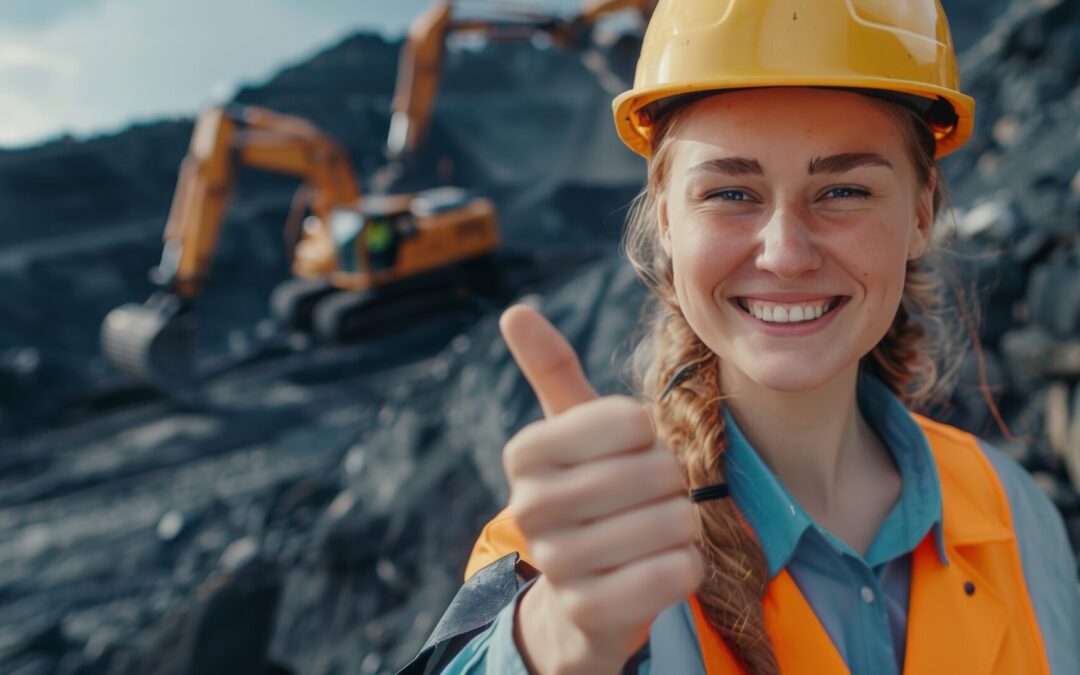The mining industry has long been male-dominated, but the history of women in mining tells a powerful story of perseverance and progress. Despite early restrictions on female labor, women have broken barriers and made significant contributions, shaping the future of the industry today. This article explores the journey of women into the mining sector and the crucial roles they now play.
Were Women Allowed to Work in the Mines?
Historically, women were prohibited from working in mines in many countries due to safety concerns and societal norms. During the 19th century, countries like the United Kingdom passed laws that banned women and children from underground work. The Mines and Collieries Act of 1842 is a notable example of such legislation, which aimed to protect women and children from hazardous working conditions. This restriction continued well into the 20th century in various parts of the world.
However, during wartime–particularly in World War II–women were called upon to step into roles traditionally held by men. This included the mining industry. It was a pivotal moment and demonstrated women’s ability to handle the physically demanding nature of mining work. Despite this, they were again excluded from mining post-war, and it wasn’t until the latter part of the 20th century that these restrictions began to be lifted, allowing women to participate in the mining industry on a larger scale.
Who Was the First Female Miner?
Women have likely been involved in mining across different cultures and regions throughout history, but many of their stories were undocumented. That being said, Diana Baldwin was a notable figure in the coal mining industry, particularly recognized for her contributions in the 1970s and 1980s. She was one of the first women to work in underground coal mines in the U.S. and even became an advocate for women in mining.
Baldwin’s work helped pave the way for more women to enter what had been a predominantly male field, highlighting issues of equality and safety in the mining industry. Her story is an important part of the history of women in traditionally male-dominated professions.
In the United States, women such as Clara Luper began breaking into roles as laborers and supervisors in the 1970s, as gender discrimination laws were implemented, making it possible for women to participate in jobs previously reserved for men.
What Is the Significance of Women in the Mining Industry?
Women’s roles in mining have evolved significantly over the years. In the past, they were relegated to clerical or administrative positions, but today, they contribute to all facets of the industry, from labor to leadership. The inclusion of women in mining is significant because it represents progress toward gender equality in a traditionally male-dominated field. Women bring unique perspectives, problem-solving skills, and leadership styles that have been proven to enhance workplace culture and productivity.
Women’s involvement in mining also reflects broader social changes and advancements in gender equity. Today, women are working not only underground but also in technical, operational, and managerial roles. The industry is becoming more inclusive, making room for diverse talents that help drive innovation and safety improvements.
Why Are Women Important in Mining?
Women are important in the mining industry because they bring diverse perspectives that can lead to safer, more efficient, and innovative work environments. Studies have shown that diverse teams, including those that have gender diversity, are more likely to be effective and generate better results. Women in mining challenge the status quo, challenging outdated norms and advocating for improved safety standards, stronger collaboration, and cutting-edge technologies.
Ultimately, women bring numerous benefits to the mining industry beyond diversity and leadership.
Here are a few key ways they contribute:
- Improved Safety Culture: Studies suggest that women prioritize safety and risk management, leading to safer working environments. Their focus on compliance and detailed assessments can help reduce accidents and improve overall safety standards.
- Workforce Retention and Morale: Women often contribute to a more supportive and collaborative workplace, fostering better communication and teamwork. This can lead to higher job satisfaction, reducing turnover rates and helping companies retain skilled workers.
- Innovative Problem Solving: Gender diversity encourages different perspectives, which leads to more creative problem-solving. Women bring fresh ideas that can help tackle complex issues in mining, from operational efficiency to environmental challenges.
- Sustainability and Environmental Awareness: Women in mining often lead the charge on environmental and sustainability initiatives, pushing for more eco-friendly practices. Their leadership can help companies meet sustainability goals and improve their environmental impact.
- Talent Pool Expansion: Bringing more women into the industry broadens the talent pool, helping address labor shortages and ensuring that mining companies can tap into the full range of available skills and expertise.
- Enhanced Community Relations: Women often play key roles in engaging with local communities, helping to build trust and cooperation, particularly in regions where mining operations affect local populations.
These contributions show that women are not just part of the workforce—they are vital to its future growth and success.
What Percentage of Miners Are Female?
The percentage of women in mining has steadily increased over time. In the United States, women made up less than 1% of the mining workforce in the early 1970s. However, as of 2021, women represent approximately 8-17% of the global mining workforce.
This increase reflects both societal changes and efforts within the industry to become more inclusive. Initiatives to encourage women to pursue careers in STEM (Science, Technology, Engineering, and Mathematics) fields have helped open doors for more women in mining-related roles. However, despite these gains, the overall number of women in mining remains lower compared to other industries.
Unique Challenges or Strengths for Women in Blue-Collar Industries Like Mining
Women in blue-collar industries, including mining, often face unique challenges such as gender bias, lack of adequate facilities, and balancing work with family responsibilities. One of the primary obstacles is overcoming gender stereotypes that label these jobs as “men’s work,” leading to a lack of support and acceptance from male colleagues. The physical demands of the job can be another barrier, as many tools, equipment, and protective gear are often designed with men in mind, making them less suited to women. In addition, women frequently encounter a lack of gender-specific facilities, such as changing rooms or restrooms, especially in remote mining locations. Harassment and discrimination also remain concerns, creating a less inclusive work environment. These challenges can make it more difficult for women to thrive and advance in the mining industry, despite their growing presence and contributions.
Despite these obstacles, women in mining show remarkable resilience and strength. As discussed, they often bring a high level of adaptability and multitasking to the workplace, qualities that are essential in fast-paced and physically demanding environments.

How Does MSHA Help Support Women in Mining?
The Mine Safety and Health Administration (MSHA) plays a crucial role in ensuring that women working in the mining industry are protected by the same safety standards that apply to their male counterparts. MSHA enforces regulations that require proper training, safety equipment, and working conditions for all miners, which is especially important for ensuring an inclusive environment for women.
MSHA has also supported initiatives aimed at increasing diversity in the workforce by promoting safe working conditions and equal opportunities for women, helping make the mining industry a viable career path for women looking to enter the field.
How Can Mine Operators Support Women on Their Teams?
Mine operators can support women on their teams by implementing policies that foster an inclusive and equitable work environment. This includes providing access to appropriate personal protective equipment (PPE) designed for women, ensuring that facilities like restrooms and changing rooms are available, and creating mentorship programs that help women advance in their careers.
Training and development opportunities that encourage women to pursue leadership roles are also critical. By promoting gender diversity at all levels of the organization, mine operators can help break down barriers for women in mining and contribute to a more inclusive industry overall.
Empowering Women in Mining: The Path Forward
The history of women in mining showcases their determination and essential contributions to breaking barriers in a traditionally male-dominated field. From overcoming exclusion to driving innovation, women have proven they are key to the industry’s future. As mining continues to advance, the inclusion of women is not just about equity—it’s about unlocking new opportunities for growth and progress.
With greater support through equitable policies, mentorship, and safer work environments, the mining sector stands to benefit from the full potential of a diverse workforce. By embracing the talents and leadership women bring, the industry can achieve a future that’s not only more inclusive but also more innovative and resilient.

